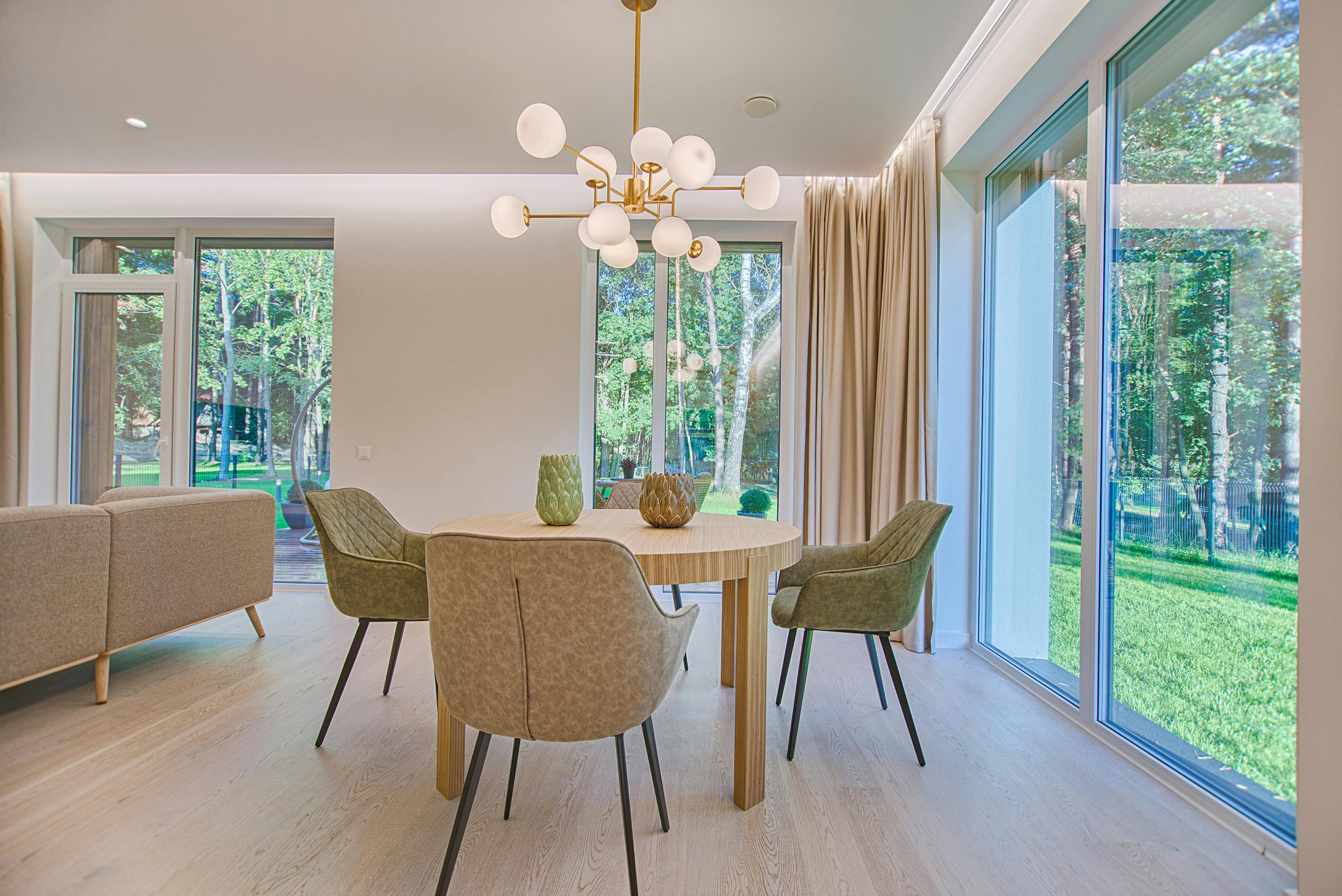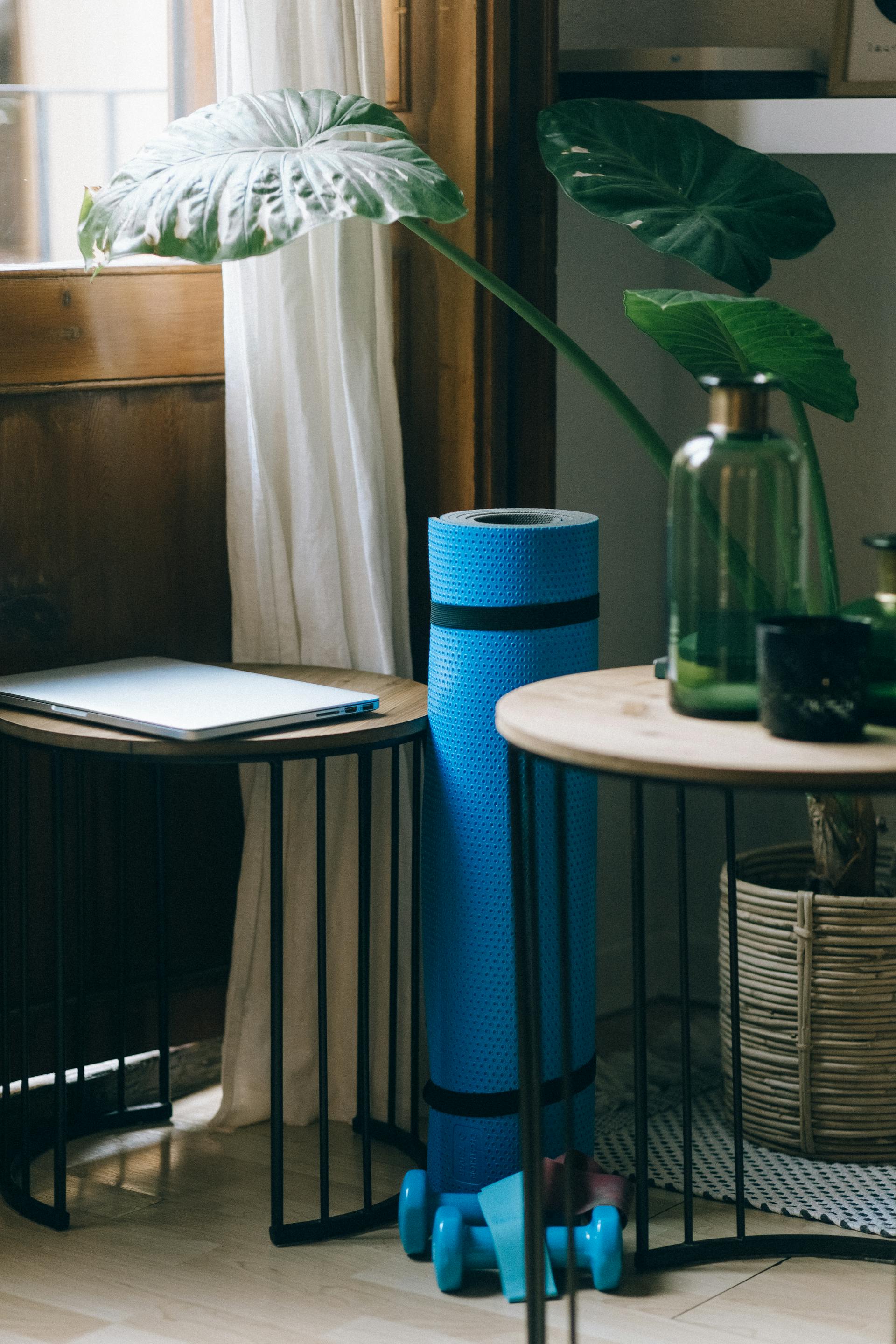Biophilic Design: Why Your Home Needs More Plants Than Your Instagram Feed
As an interior designer, I've seen it all – from clients who think a single succulent counts as "bringing nature indoors" to those who want to transform their living room into the Amazon rainforest. But here's the thing: biophilic design isn't just another trendy buzzword your yoga instructor throws around. It's a scientifically-backed approach to interior design that can literally improve your health, productivity, and general happiness levels.
What Is Biophilic Design? (And Why Should You Care?)
Biophilic design is the practice of incorporating natural elements into interior spaces to satisfy our innate connection to nature. Think of it as evolutionary psychology meets interior decorating. The term comes from "biophilia," coined by biologist Edward O. Wilson, which describes our hardwired love affair with all things natural.
As an interior designer, I like to explain it this way: we spent thousands of years living in caves and huts, then suddenly found ourselves in concrete boxes with fluorescent lighting. Our brains are still trying to figure out what happened, and they're not thrilled about it.
The solution? We bring the outdoors in, creating interior spaces that make our caveman brains happy while still enjoying modern amenities like Wi-Fi and coffee makers.
The Science Behind Going Green (No, Not That Kind)
Before you roll your eyes and think this is just another design fad, let me hit you with some hard facts. Research shows that biophilic design can reduce stress by up to 15%, increase productivity by 15%, and improve overall well-being by 25%. That's better ROI than most stock investments, and you don't need a financial advisor to achieve it.
Studies conducted in offices with natural elements found that employees took 36% fewer sick days. Hospital patients with views of nature recovered faster than those staring at blank walls. Even looking at pictures of nature can lower blood pressure and reduce cortisol levels.
As someone who's spends nearly all of ther time designing spaces, I can tell you that clients consistently report feeling more relaxed and energized in rooms that incorporate biophilic design principles. It's not placebo effect – it's biology.
Essential Elements of Biophilic Interior Design
Plants: The Green MVPs
Let's start with the obvious stars of the show: plants. But before you panic about becoming a plant parent, remember that some plants are basically the golden retrievers of the plant world – happy, low-maintenance, and forgiving of your occasional neglect.
For biophilic design beginners, I recommend starting with snake plants (Sansevieria), pothos, or ZZ plants. These beauties can survive almost anything, including your vacation, that time you forgot to water them for three weeks, and your general inexperience with keeping things alive.
For clients ready to level up, fiddle leaf figs, monstera deliciosa, and bird of paradise plants make stunning statement pieces. Just remember: bigger plants equal bigger impact, but also bigger responsibility. Choose wisely.
Pro tip: Group plants in odd numbers and varying heights. It's more visually appealing and makes it look like you actually planned your plant placement (even if you just bought whatever was on sale).
Natural Materials That Don't Look Like They're Trying Too Hard
Incorporating natural materials is crucial for authentic biophilic design. I'm talking about real wood, natural stone, bamboo, rattan, and organic textiles – not the plastic wood-look vinyl that fools absolutely no one.
Reclaimed wood dining tables, stone accent walls, jute rugs, and bamboo furniture all contribute to the natural aesthetic while adding texture and warmth. These materials age beautifully, developing character over time instead of looking dated like those grey walls most of us bought into in 2010 ('s).
The key is balance. You want your home to feel like a natural sanctuary, not a log cabin that got lost in suburbia.
Maximizing Natural Light (Because We're Not Vampires)
Natural light is the holy grail of biophilic design and good interior design in general. It regulates our circadian rhythms, improves mood, and makes everything look better – including you.
If you're blessed with large windows, don't hide them behind heavy drapes like they're some shameful family secret. Use sheer curtains, light-filtering blinds, or motorized shades that can be adjusted throughout the day.
For homes with limited natural light (looking at you, basement apartments), strategic mirror placement can work miracles. Position mirrors opposite windows to reflect light throughout the space, and consider adding skylights or solar tubes if structurally possible.
Water Features: The Sound of Serenity
Nothing says "spa vibes" like the gentle sound of flowing water. Indoor water features range from small tabletop fountains to dramatic wall installations. Even a simple bowl fountain can transform a space and mask urban noise pollution.
If a water feature isn't in your budget or seems too high-maintenance, smart home technology can provide natural sounds like rainfall or ocean waves. It's like having nature's white noise machine without the actual maintenance.
Room-by-Room Biophilic Design Implementation
Living Spaces: Where Life Happens
The living room is prime real estate for biophilic design elements. Start with a statement plant – think of it as living sculpture that also happens to purify your air. A large fiddle leaf fig or monstera can anchor a room better than most furniture pieces.
Layer in natural materials through your furniture choices. A live-edge wood coffee table, stone fireplace surround, or woven accent chairs all contribute to the natural aesthetic while serving practical purposes.
Color palette matters too. Earth tones, forest greens, ocean blues, and warm terracottas all reflect natural environments and create a cohesive biophilic design scheme that doesn't scream "I bought everything at the same store on the same day."
Bedrooms: Your Personal Sleep Sanctuary
The bedroom should be your ultimate retreat, and biophilic design can significantly improve sleep quality. Choose plants that work the night shift, releasing oxygen while you sleep – snake plants and aloe vera are perfect bedroom companions.
Natural fiber bedding, wooden furniture, and organic textures create a cocoon-like environment that promotes better rest. Blackout curtains help regulate natural light cycles, while a small water feature can provide gentle white noise for deeper sleep.
Bathrooms: Spa Vibes on a Real Budget
Bathrooms are naturally suited to biophilic design because they already have the water element covered. High-humidity plants like ferns, orchids, and air plants thrive in bathroom environments and turn your daily routine into a mini-retreat.
Natural stone tiles, wooden vanities, and organic shapes in fixtures can transform a basic bathroom into a spa-like sanctuary. Plus, plants in the bathroom improve air quality, which is always a win.
Addressing the Elephant in the Room (Maintenance Anxiety)
Let me guess – you're worried about keeping plants alive, right? I get it. I've had clients confess to killing cacti, which is honestly impressive in its own way.
Here's the truth: start small and choose forgiving plants. Many plants actually prefer benign neglect to helicopter parenting. Overwatering kills more plants than underwatering, so when in doubt, wait another day.
There are also plenty of resources available – plant care apps, local nurseries with helpful staff, and online communities of plant enthusiasts who love helping beginners succeed.
Budget-Friendly Biophilic Design Solutions
Professional biophilic design doesn't require a trust fund. Start with propagating plants from cuttings (many plants practically beg to be propagated), choose natural materials that age well, and make incremental changes over time.
Thrift stores and estate sales are goldmines for natural material furniture pieces that just need a little love. A weekend of refinishing can transform a tired wooden dresser into a stunning biophilic design element.
The Future of Natural Interior Design
Biophilic design isn't going anywhere – if anything, it's becoming more sophisticated as our understanding of the environment-wellness connection grows. Smart home technology is integrating natural elements through automated plant care systems and lighting that mimics natural daylight cycles.
As an interior designer, I predict we'll see more innovation in this space, from living walls integrated with smart irrigation systems to furniture that incorporates living elements in unexpected ways.
Ready to Transform Your Space?
Biophilic design represents a fundamental shift toward creating homes that support human health and happiness. It's not just about following trends – it's about creating spaces that make you feel genuinely better every day.
Whether you're planning a major renovation or just want to refresh your current space, incorporating biophilic design principles can transform your home into a natural sanctuary. Start with elements that resonate with you personally, and remember: even small changes can have a big impact.
Your future self (and your stress levels) will thank you. And who knows? You might even become one of those people who can keep plants alive. Stranger things have happened.
Looking to incorporate biophilic design into your home? Contact our interior design team for a consultation and let's bring nature indoors – Intuitive Interiors LLC 972 571 9506 intuitiveinteriors.online
related articles

Cozy but Minimal: The ease of design for the comfortably clean

The Healthy Home Revolution


